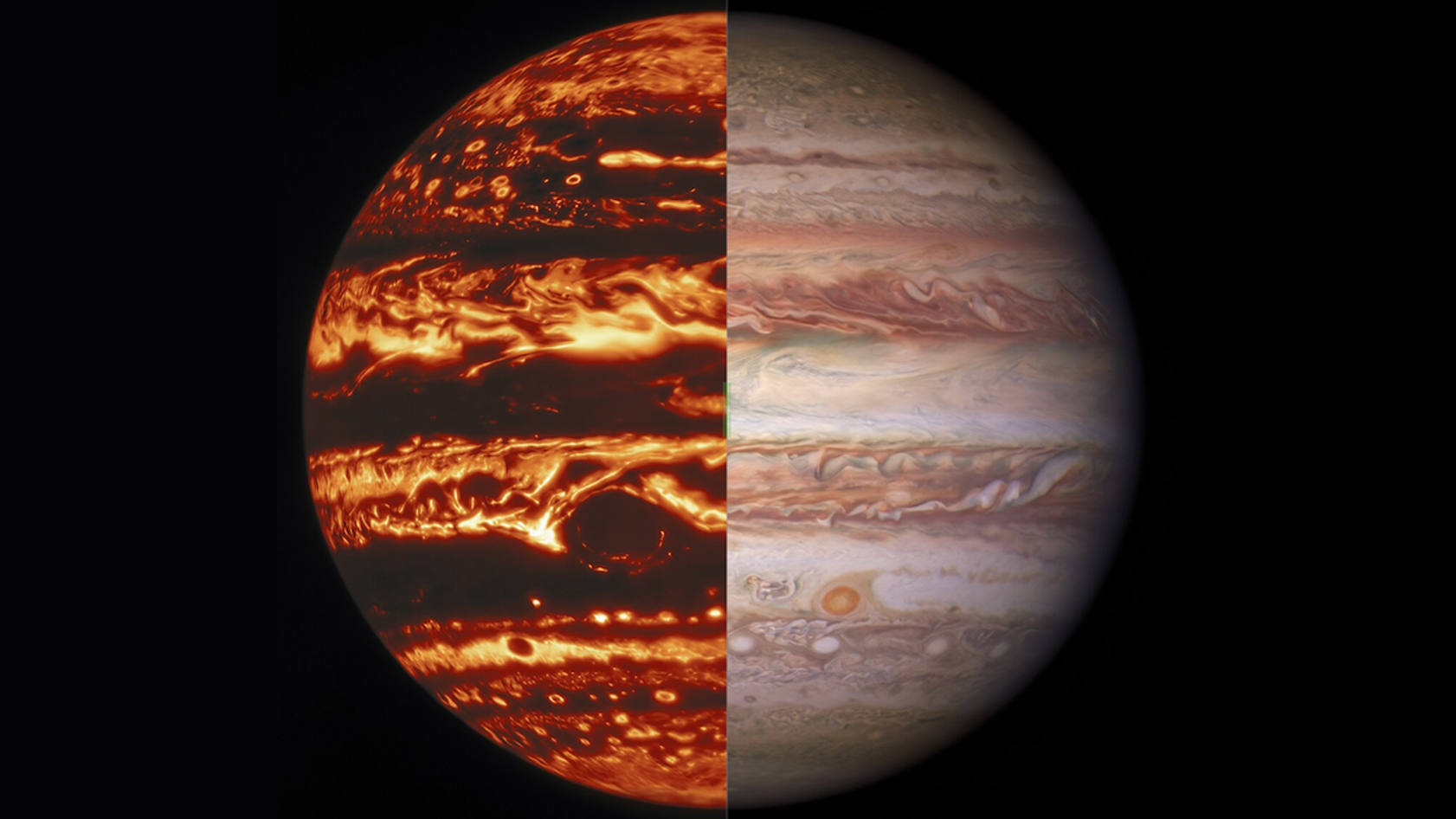Jupiter's Great Red Spot is 40 times deeper than Mariana Trench

On Jupiter, a storm's been brewing for more than 300 years. Known as the Great Red Spot, this swirling high-pressure region is clearly visible from space, spanning a region in Jupiter's atmosphere more than 10,000 miles (16,000 kilometers) wide — about one and a quarter times the diameter of Earth.
But there's even more to the churning tempest than meets the eye; according to two new studies published Oct. 28 in the journal Science, Jupiter's Great Red Spot is also extraordinarily deep, extending as many as 300 miles (480 km) into the planet's atmosphere — or about 40 times as deep as the Mariana Trench on Earth.
Related: Could a spaceship fly through a gas giant like Jupiter?
That's far deeper than researchers expected, with the bottom of the storm extending well below the atmospheric level where water and ammonia are expected to condense into clouds, the researchers wrote. The storm's deep roots suggest that some as-yet unknown processes link Jupiter's interior and deep atmosphere, driving intense meteorological events over much larger scales than previously thought, the researchers said.
"We're getting our first real understanding of how Jupiter's beautiful and violent atmosphere works," Scott Bolton, principal investigator of NASA's Juno Mission and lead author of one of the new papers, said in a statement.
Both new studies relied on observations from NASA's Juno probe, which entered Jupiter's orbit in 2016 and has since completed 36 passes of the nearly 87,000-mile-wide (140,000 km) gas giant. In one study, scientists examined the Great Red Spot using the probe's microwave radiometer — a tool that detects microwaves emitted from inside the planet. Unlike the radio and infrared radiation emitted by the gas giant, microwaves can make it all the way through the planet's thick cloud layer, according to NASA.
By studying the microwave emissions that made it through the Great Red Spot, the authors of the first study determined that the storm extends more than 200 miles, or around 350 km, deep.
Sign up for the Live Science daily newsletter now
Get the world’s most fascinating discoveries delivered straight to your inbox.
The second study found the spot may be even bigger than that. That paper's authors examined the Great Red Spot using Juno's gravity detection tools. Synthesizing data from 12 flights that passed by the spot — including two direct overhead flights — the researchers calculated where the storm was concentrating the most atmospheric mass over the planet, allowing them to estimate its depth. The authors determined that the spot reaches a maximum depth of about 300 miles (500 kilometers) below the cloud tops.
As deep as this seems, the Great Red Spot is still much shallower than the enormous jets of wind that surround and power it, the researchers said; those bands of wind extend to depths of about 2,000 miles (3,200 km) below the cloud tops. The reasons for this discrepancy remain a puzzle, but the spot's relative shallowness might be due to another recently-discovered phenomenon: The Great Red Spot is shrinking, the researchers said, having lost about a third of its width since 1979.
The future of the spot remains uncertain, but whatever happens, Juno will continue to keep tabs on our big, gassy neighbor in space.
Originally published on Live Science.

Brandon is the space/physics editor at Live Science. His writing has appeared in The Washington Post, Reader's Digest, CBS.com, the Richard Dawkins Foundation website and other outlets. He holds a bachelor's degree in creative writing from the University of Arizona, with minors in journalism and media arts. He enjoys writing most about space, geoscience and the mysteries of the universe.










